Sports
Spanish GP data: How Max Verstappen cooked against a quicker McLaren car
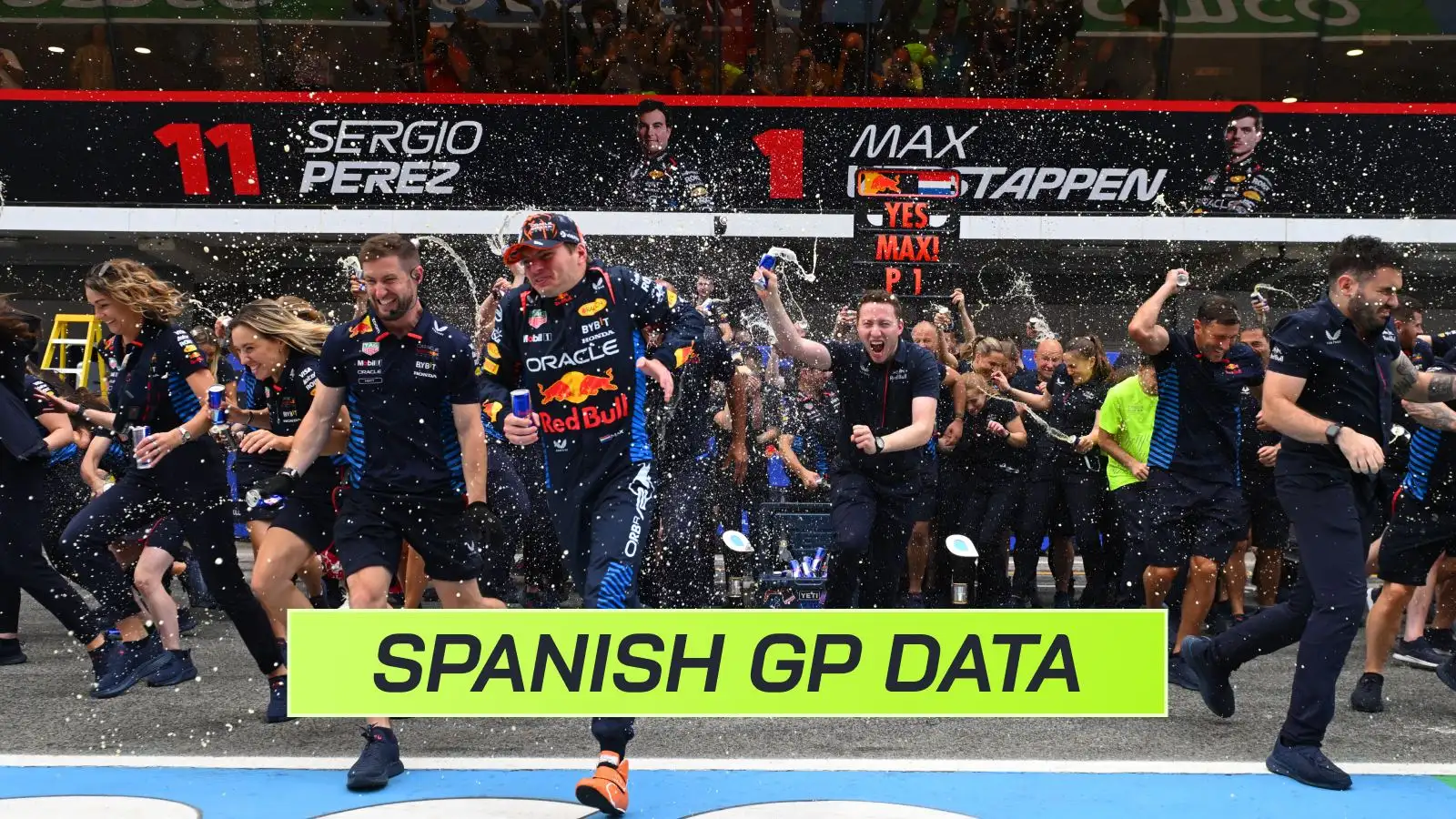
Max Verstappen took victory at the Spanish Grand Prix after a brilliant drive. The Dutch driver managed to beat Lando Norris and a superior McLaren thanks to a good start and an early move on George Russell that was decisive for the outcome of the race in Barcelona.
The key to Verstappen’s victory came at the start and in the opening three laps. George Russell benefited from the slipstreaming of Norris and Verstappen who were fully focused on fighting each other after lights out.
But that’s not the end of the story of Barcelona’s exciting start. Verstappen, on a used soft tyre, also used his confidence and courage to brake later than Lando Norris and sneak up the inside of the McLaren driver.
This really was the key moment in Max’s victory, because if he had been behind Norris after Turn 1, he would probably not have been able to pass the McLaren on the new soft tyre so easily.
Gianpiero Lambiase, Verstapen’s race engineer, as soon as he saw Max’s race situation, made it clear to him: “Max, this might be our best opportunity. Think wisely”. And Max delivered.
He activated the ‘push mode’ on the first lap with DRS available to attack George Russell on the straight at the Circuit de Barcelona-Catalunya.
It is also true that Russell defended his position in a strange way. The Mercedes driver went straight to cover the inside, assuming that Max would attack him there. However, in doing so, he comfortably handed the outside to Verstappen and the Red Bull driver only had to avoid contact to move into first place just after starting Lap 3.
In this situation, McLaren should also have warned Norris how critical it was to overtake Russell as soon as possible. Even more so as the papaya team knew that Verstappen had saved the new set of softs for the end of the race and, in this particular situation, he would have a slight advantage at the end.
But, as was the case at Imola, the MCL38 seems to struggle to find the pace when the car is on a high fuel load – it slowly comes to life as the laps go by. In the first stint, Norris couldn’t overtake Russell and this condemned him.
On lap 15 the first set of pit stops started with Russell being the first to stop due to Mercedes’ higher degradation on the soft compound compared to their rivals and protecting themselves from an undercut by Norris.
But Mercedes made a big mistake with a slow stop of +5.3s which could have helped Norris to secure P2 on the next lap with an overcut, but Norris and McLaren decided to “go for Max” and fight for that P1 knowing this could be a risky move of losing P2 to Mercedes afterwards.
Verstappen stopped on lap 18 to ensure he had clean air and easily got out in front of Russell thanks to Mercedes’ slow stop and the gap he had opened earlier on track. The key fight, the one in the opening stages of the race, had already been won by Max thanks to the Dutchman’s incredible start and first three laps.
In the second stint, it was a very different story. Norris found a vastly superior pace on the medium tyre, six laps fresher than Verstappen’s.
Thanks to this tyre advantage, a better pace from the McLaren and less tyre wear than his rivals, Norris had a better second stint on average time than Max, even though he lost time by overtaking Carlos Sainz, Lewis Hamilton and George Russell on track. The last one was a brilliant and clean fight between both drivers.
McLaren’s idea was to get back to a good tyre advantage at the end of the race as they had in the second stint, which could allow them to fight for the win.
That meant to reduce the ‘virtual’ 6-7 seconds gap between Verstappen and Norris. Red Bull stopped Verstappen on lap 44 to come out with seven seconds of clean air with Charles Leclerc and Lando Norris yet to pit.
However, Hamilton was also on the soft tyre as he pitted by the end of lap 43 and the pace of the Mercedes was very positive. The British driver easily overtook Carlos Sainz and his next rival was George Russell on an older hard compound. Mercedes would have allowed him to pass easily in order to get that P2.
In this scenario, McLaren had to react to secure P2 and had to sacrifice three laps of tyre advantage over Verstappen – plus the inherent advantage of the Dutchman’s new soft compound compared to the used one of Lando – to avoid going out behind Hamilton when he pitted.
McLaren’s 3.6 second pit stop on lap 48 was really bad and almost cost Norris the position with Russell – and Hamilton, what they were really trying to avoid. However, it was enough to get him into P2 ahead of the two Mercedes and eight seconds behind Verstappen with 18 laps to go.
From there, Norris began to push and cut a lot of time off Verstappen, but it wasn’t enough as Lambiase advised Max to switch to Strat 10 on his steering wheel on Lap 54. From there, the gap began to settle for some laps and even though the final gap was reduced to +2.2 seconds, Max got a very well deserved win.
Ultimately, the first stint behind Russell and losing track position to Verstappen condemned Norris in a race that proved, in the words of the drivers themselves, that McLaren is a step above Red Bull in terms of performance.
But once again, Max Verstappen has made his champion status count to make the difference in the truly decisive moments.
This graph also confirms the latter. Although Verstappen is shown with the best average race pace with a 1:19.574, Lando’s pace is only 25 thousandths of a second worse. And we have to take into account that Lando had to overtake on track and had no clean air in the first stint behind Russell.
Therefore, we can say that McLaren was faster, but Max Verstappen was the worthy winner of the ‘Driver of the Day’ award thanks to his great driving – and especially to those first three laps of the race.
It was a big missed opportunity for Norris and McLaren. It’s true that being on the limit makes you make mistakes. That always penalises you against someone like Verstappen who never makes any. And the moment Red Bull takes a small step forward McLaren will not enjoy such clear chances to win as they did in Barcelona.
Read next: Spanish Grand Prix conclusions: Red Bull dominance over, Lando Norris transformed

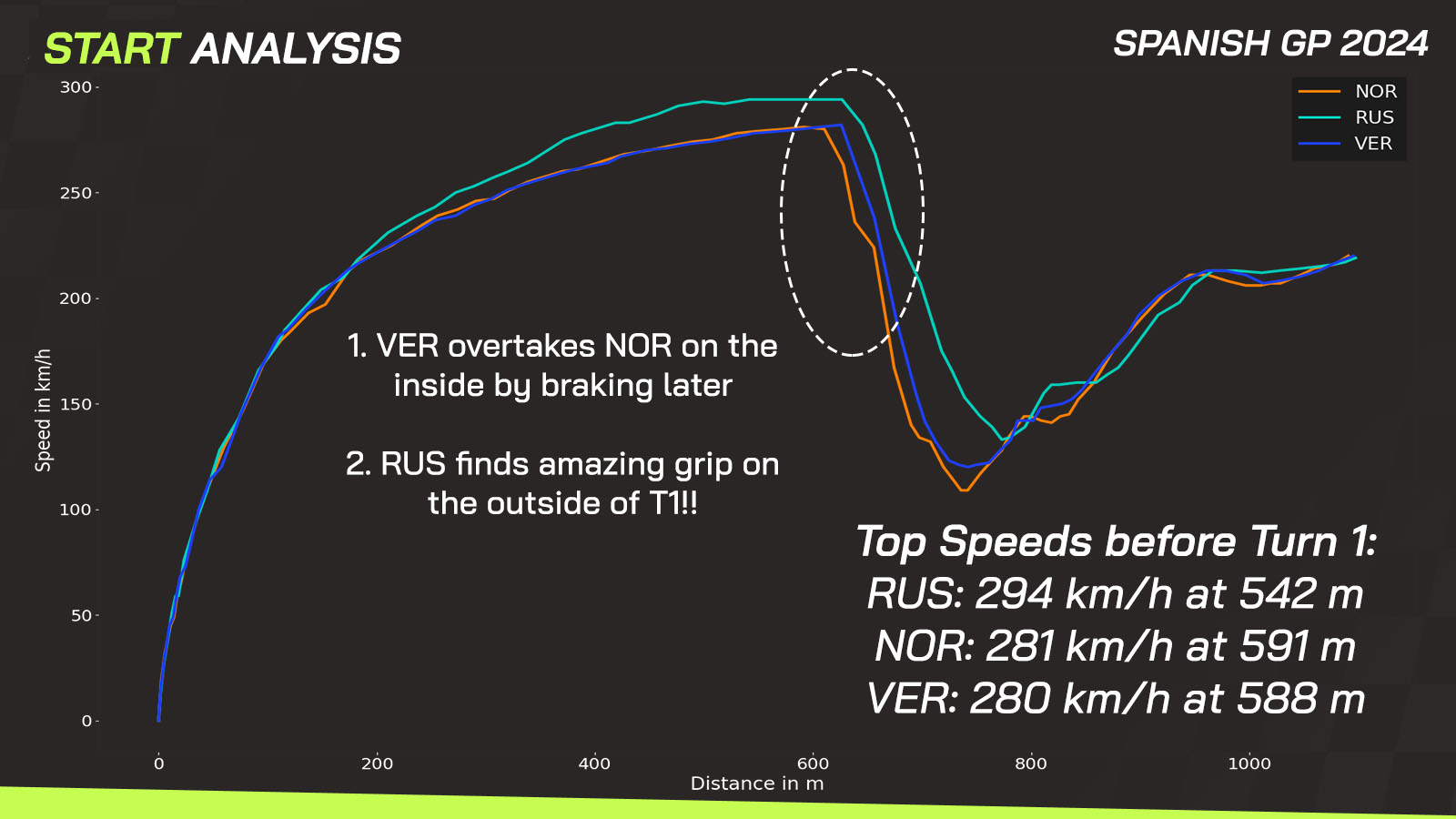

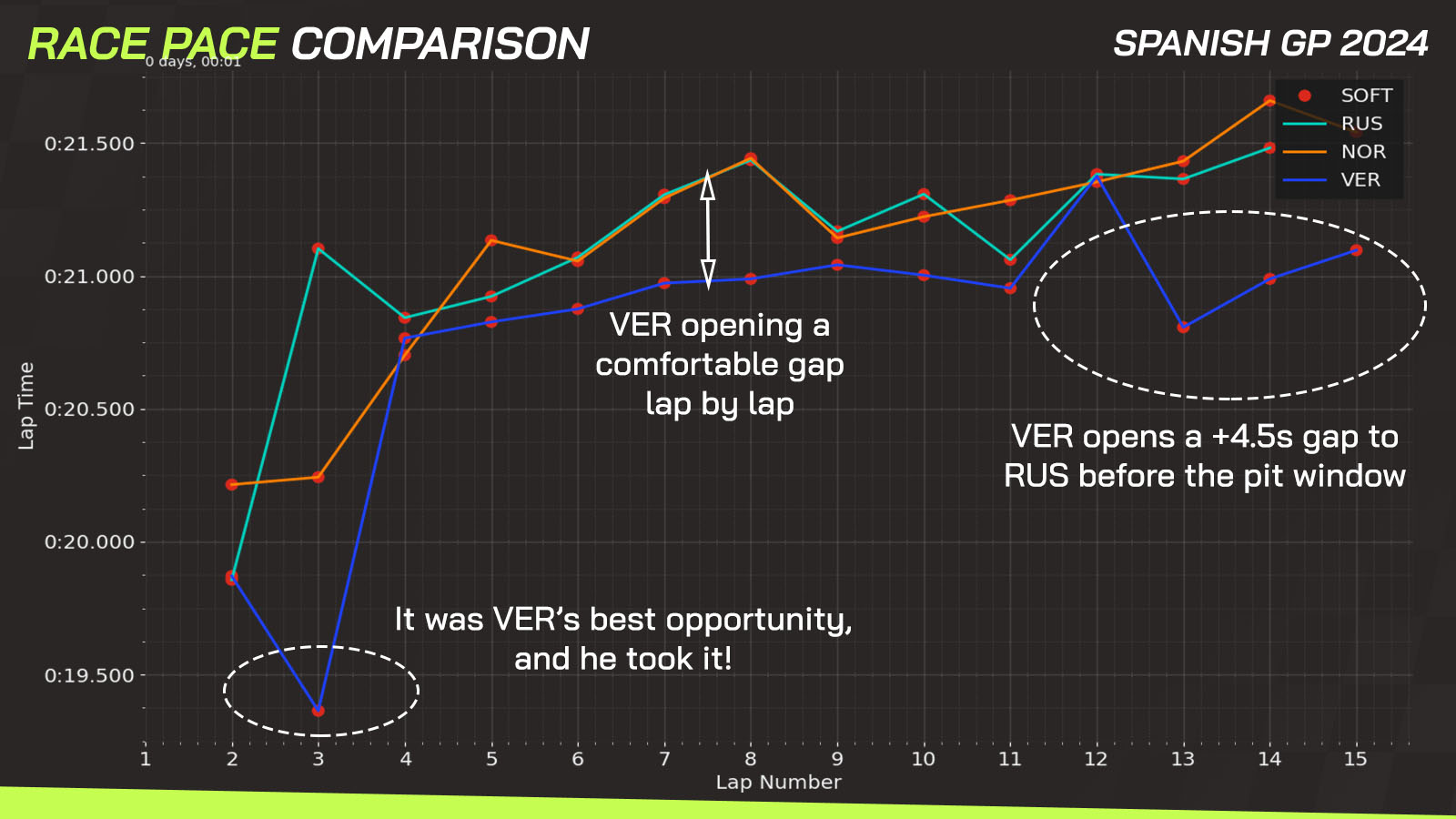
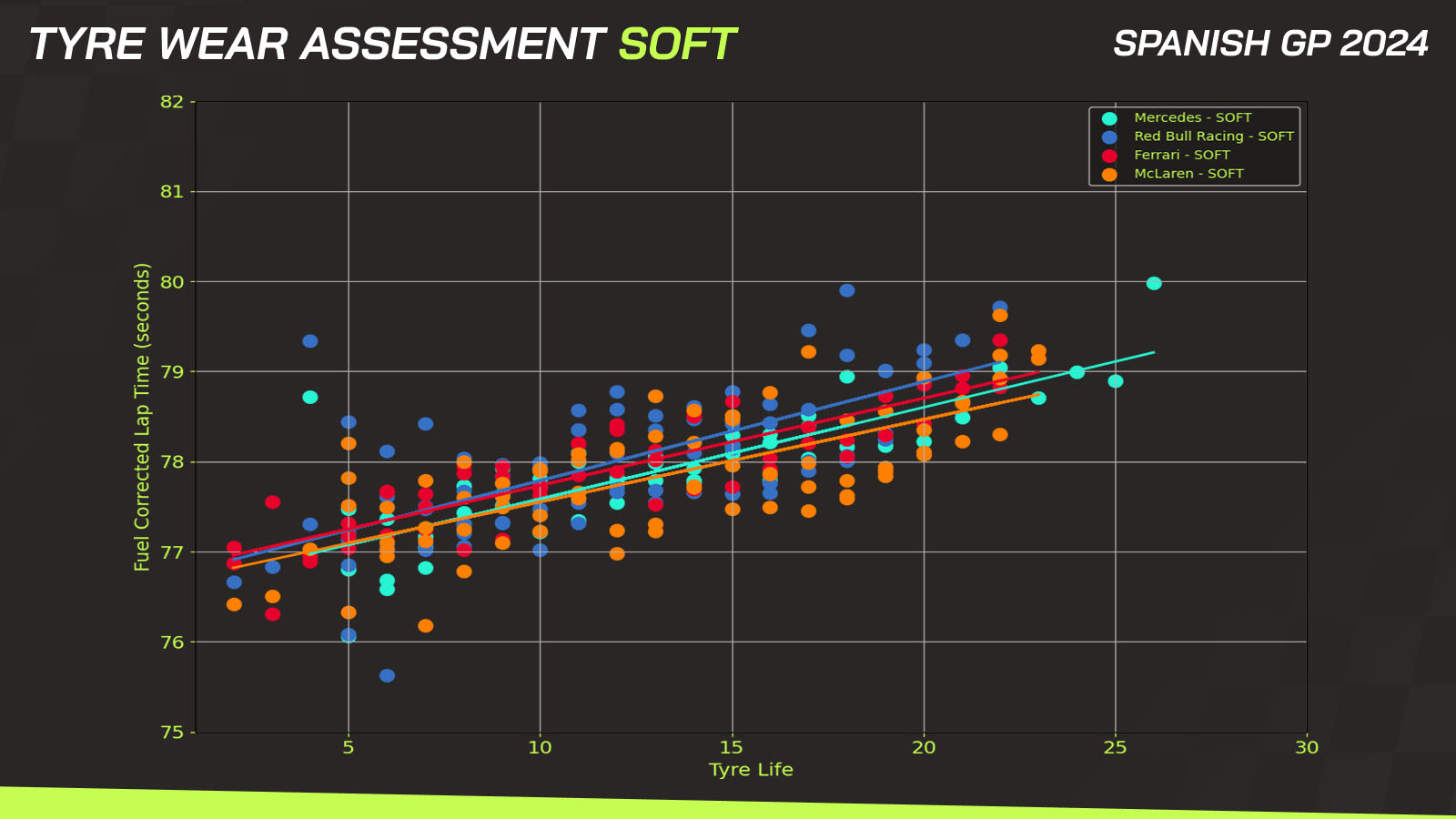
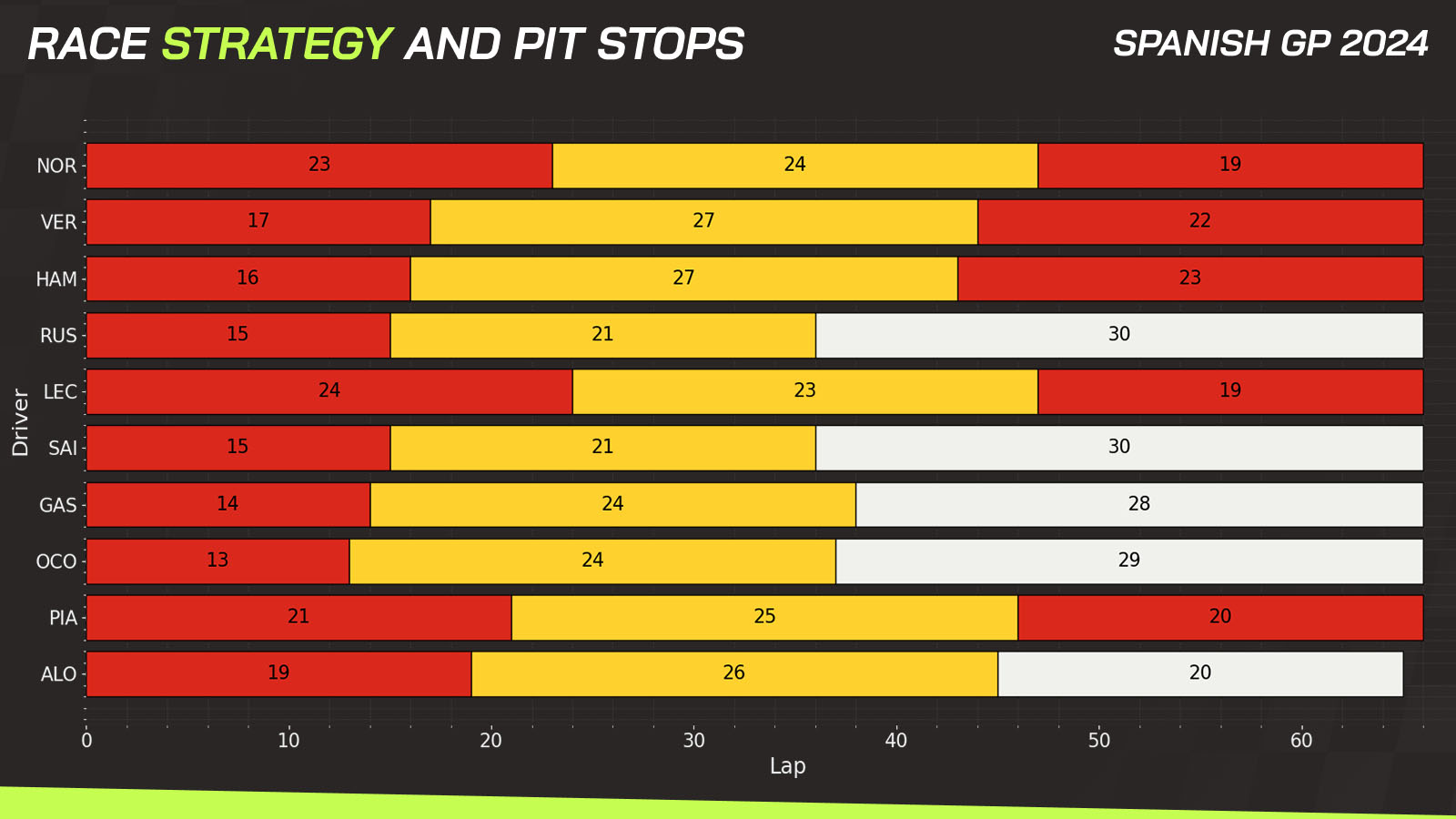
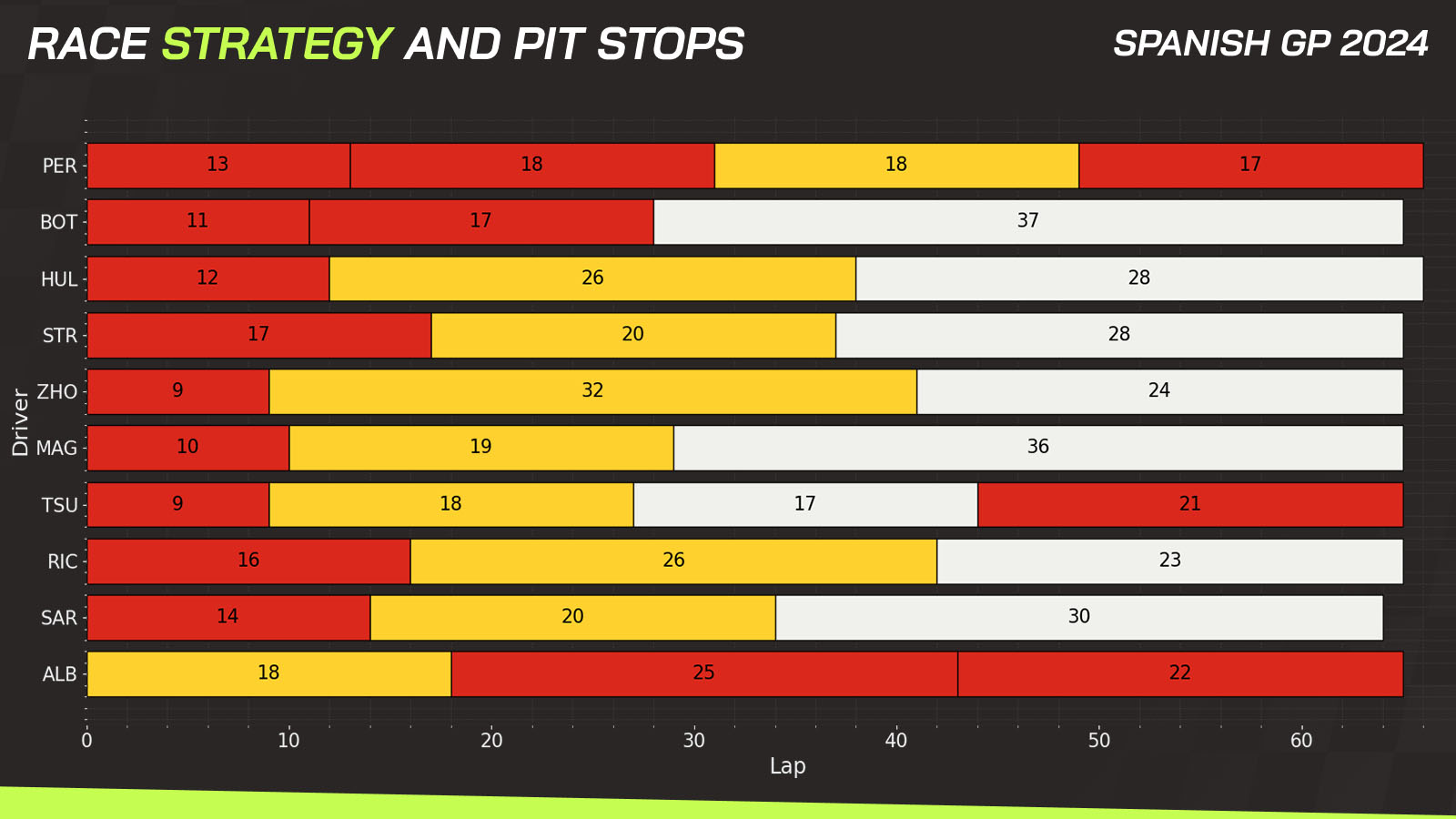
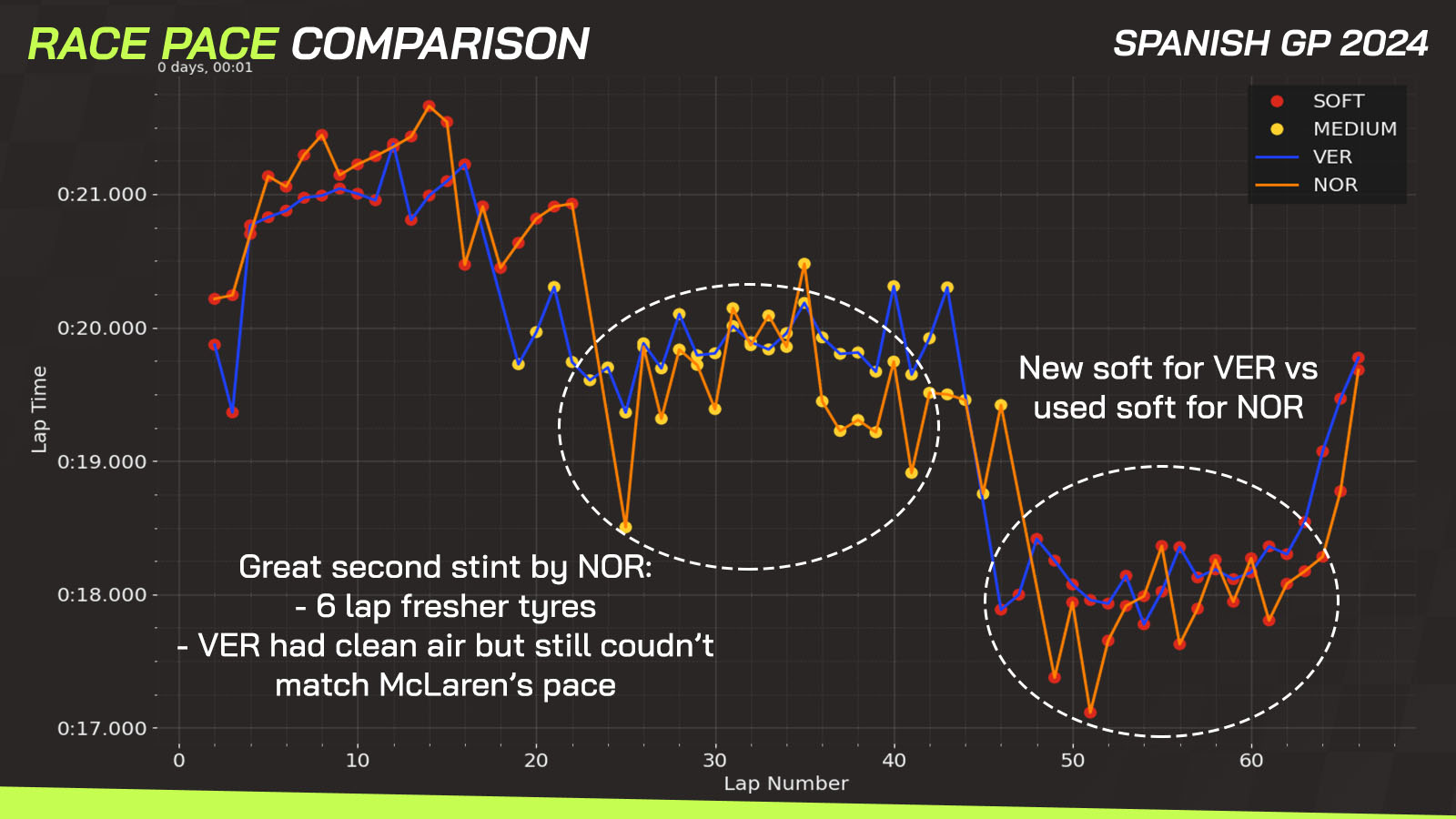
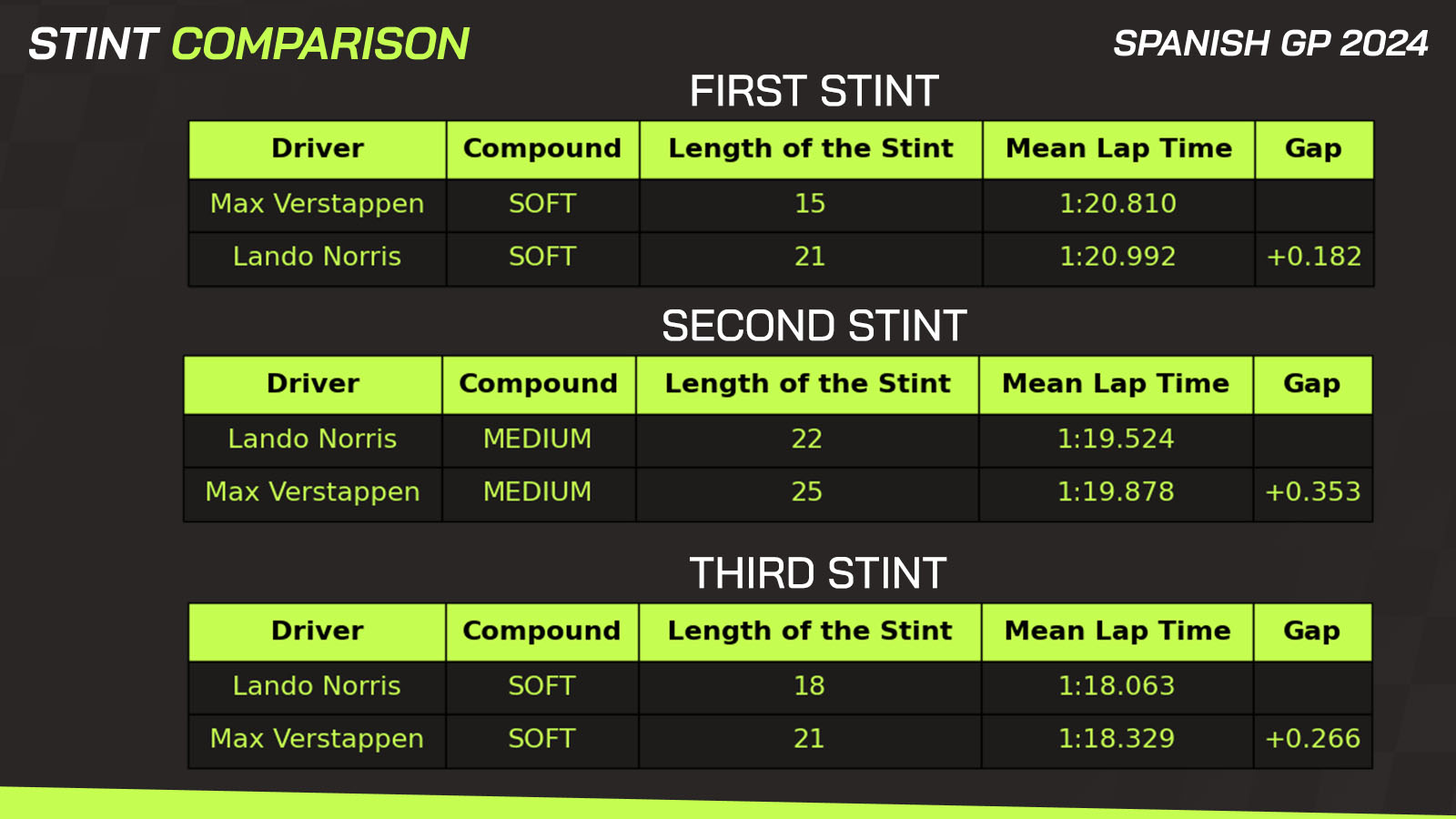
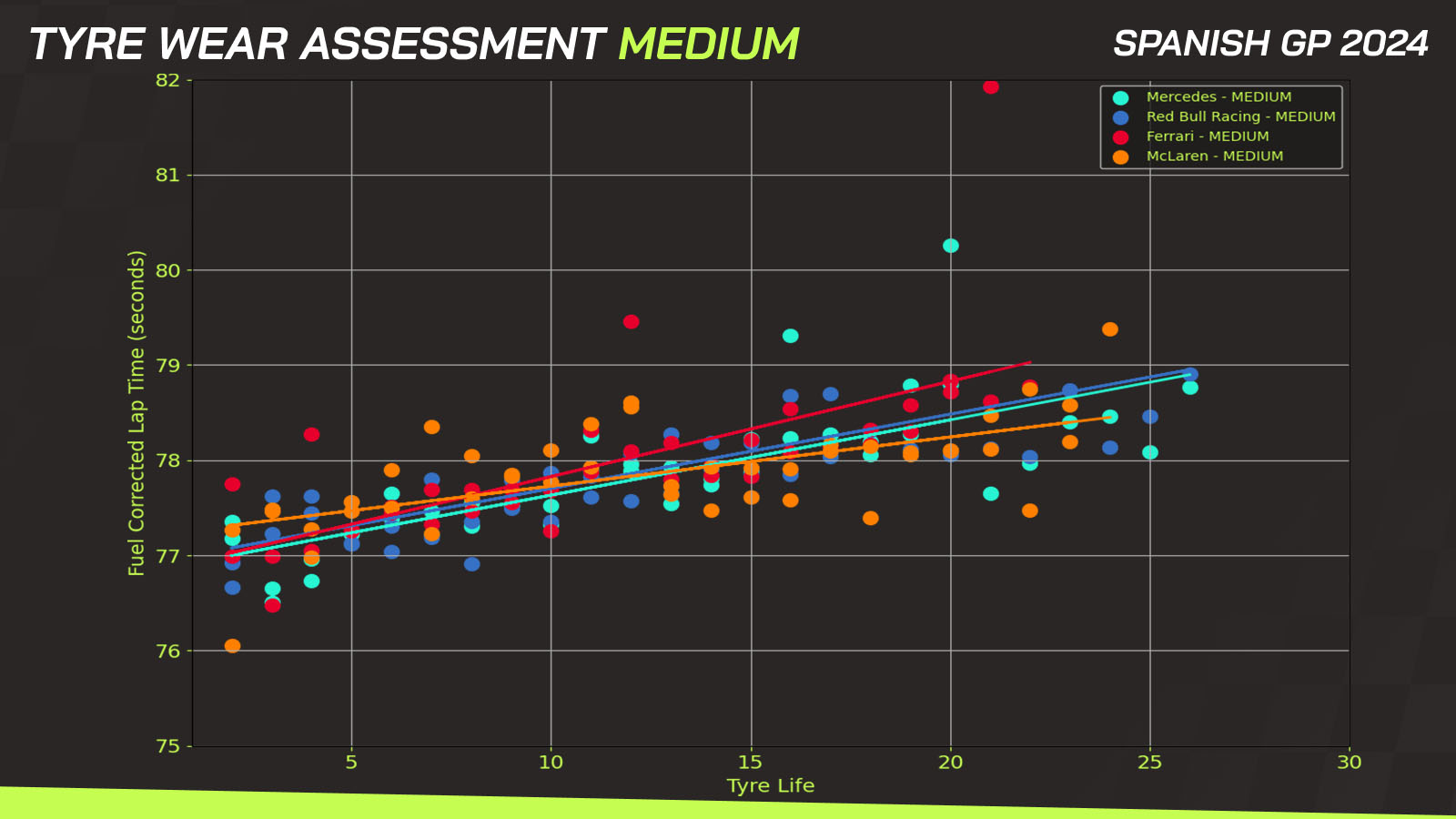
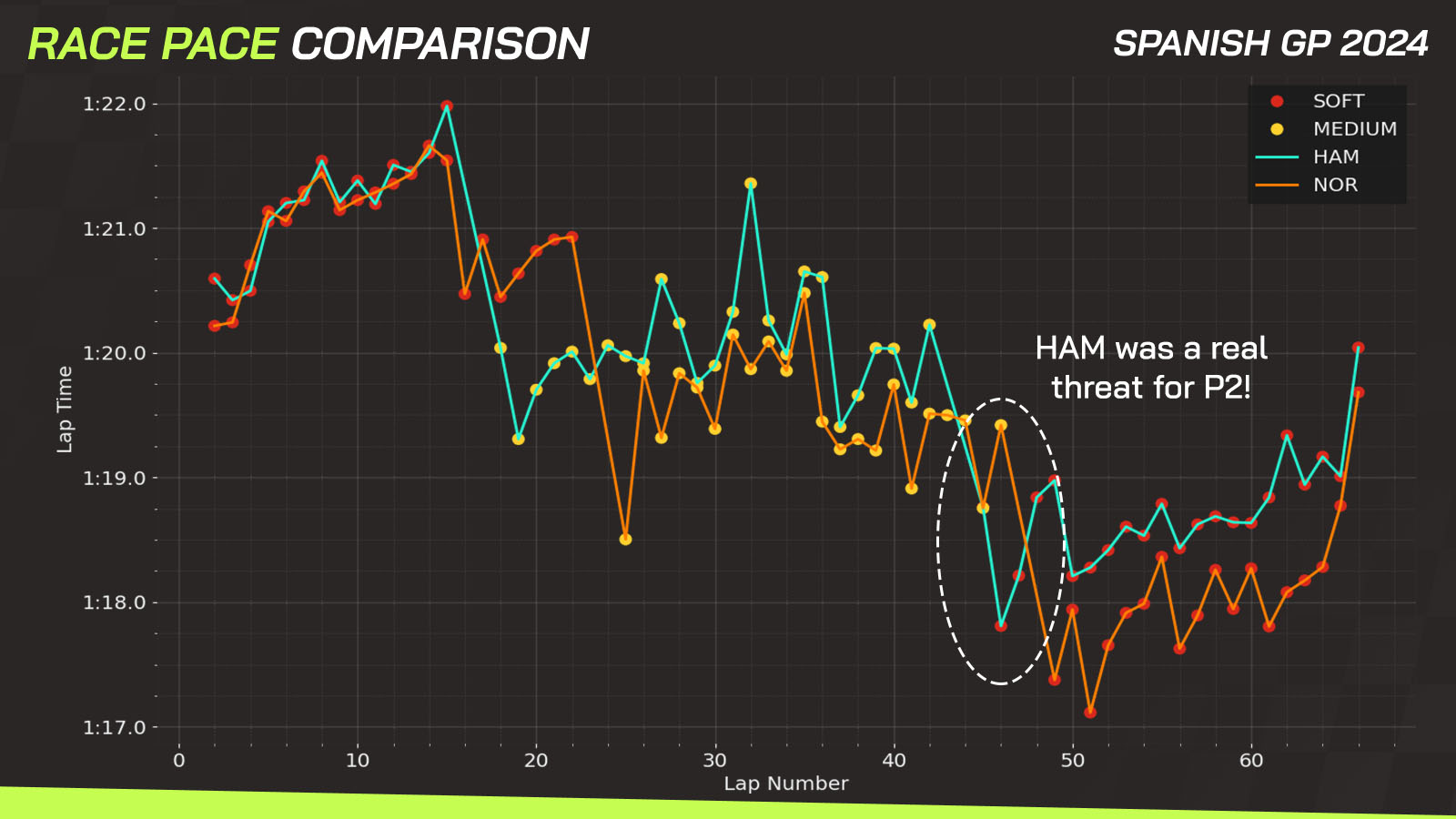
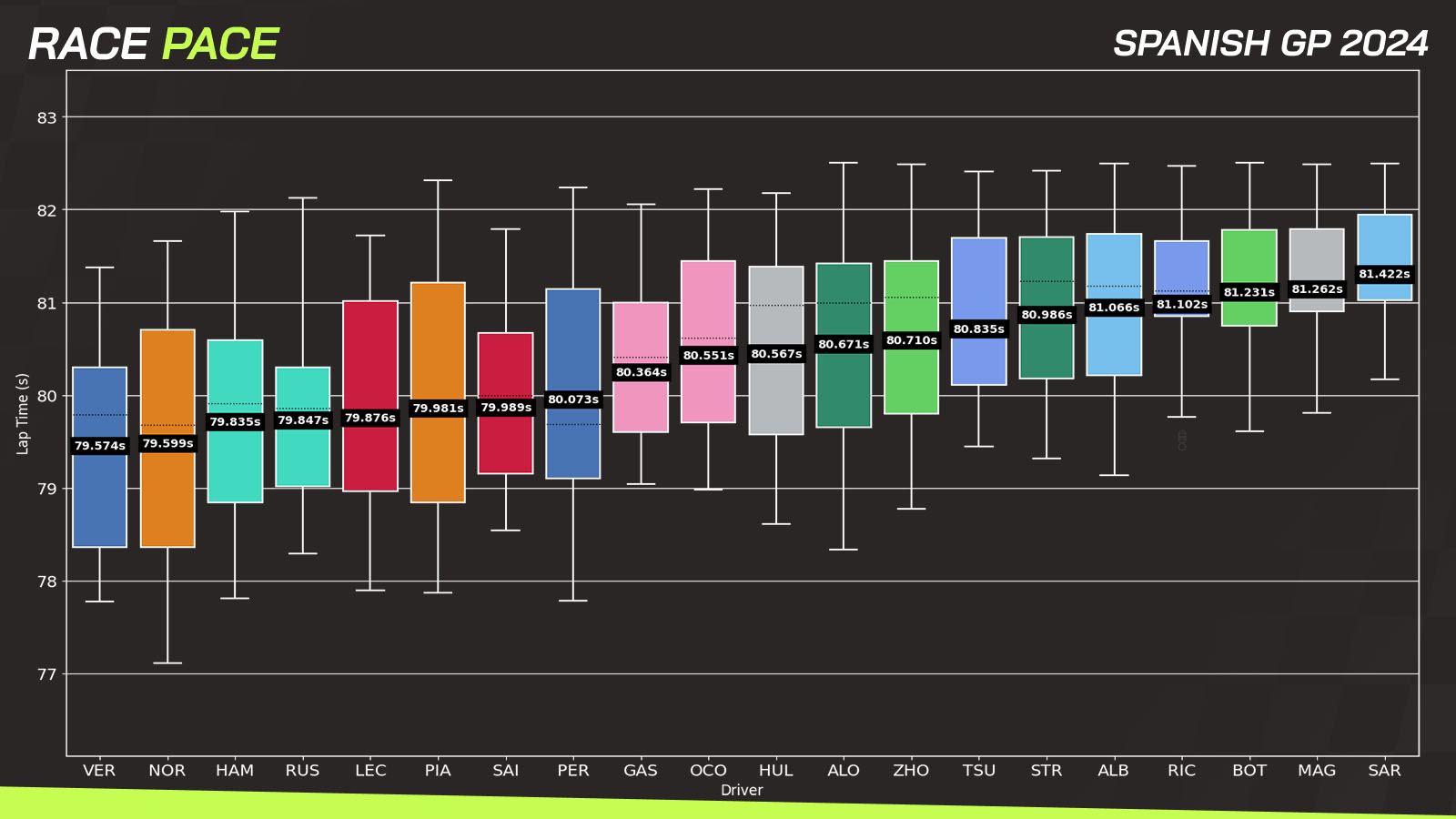

)






